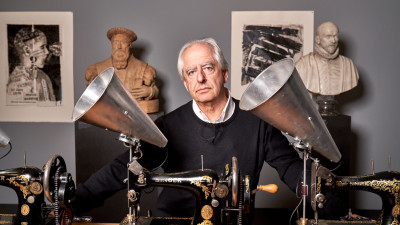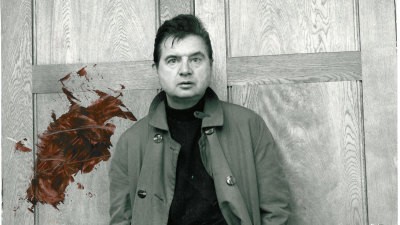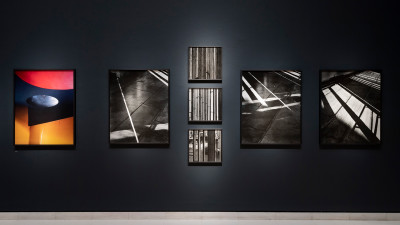Cats and conversations: laying out the exhibition with Ai Weiwei
Cats and conversations: laying out the exhibition with Ai Weiwei
Behind the scenes
By Adrian Locke
Published 26 January 2015
At a meeting in his Beijing studio, Ai Weiwei and curator Adrian Locke plan the gallery layout for the artist’s major RA show this year.
-
Part three in a series of blogs telling the story of how our forthcoming Ai Weiwei exhibition – the latest in our sequence of major single artist shows – is being put together across 10 months, by teams across three continents.
Ai Weiwei likes to meet early in the morning and as there are no street names in the area of Beijing where he lives – Caochangdi, known simply as ‘the village’, – the first challenge of the day is to direct the non-English-speaking taxi driver to his compound. Given the maze of indistinguishable narrow streets that make up the village this is not as easy as it sounds. However, you know you have arrived when you spot the red lanterns that Ai Weiwei has hung next to the surveillance cameras opposite his compound that the police have positioned to monitor his movements.
Outside the familiar blue doors with the nameplate FAKE after the name of his company, a bicycle is chained to a tree. Since 30 November 2013, Ai Weiwei has placed fresh flowers in its basket everyday as a symbol of defiance towards the authorities that continue to refuse him a passport. Arriving on time gives me a real sense of achievement but I am nervous about how the meeting will go.
-

Garfield: he means business

Framed by the doorway he designed himself, Ai Weiwei arrives at the Red Brick complex for lunch
-
I sat at the now familiar meeting table in the courtyard. Meeting Cat was nowhere to be seen. Instead there was Garfield, the boss cat of the compound. No introductions, no preamble, Garfield just jumped onto my lap and looked at me. ‘Got a problem?’ he seemed to ask. ‘Not me’ I said after catching his eye and realising that he wasn’t number one for nothing.
Over tea, Ai Weiwei and I metaphorically walked through the galleries of the Royal Academy, laying out the exhibition. Every now and then one of the assistants was dispatched to find an illustration in one of the numerous publications on his work, or to bring up images on a laptop. The experience was intense but incredible. Ai Weiwei was totally focused on the process and noted every decision on his own copy of the gallery plans. He has an instinctive understanding of space and volume which, when combined with his aesthetic judgement, produces a harmonious and perfectly calibrated result. The meeting was a great success; we made huge progress in a short space of time.
We broke for lunch. John Tancock, working on cataloguing Ai Weiwei’s extraordinary archive of photographs, invited us to eat at Chambers Fine Art Gallery which is located literally around the corner in a building that Ai Weiwei designed, part of the Red Brick complex. After a sumptuous and deceptively simple meal, John and I set out to explore the village and, in particular, to look at other buildings Ai Weiwei had designed in the area.
Ai Weiwei is in the Main Galleries from 19 September — 13 December 2015.





